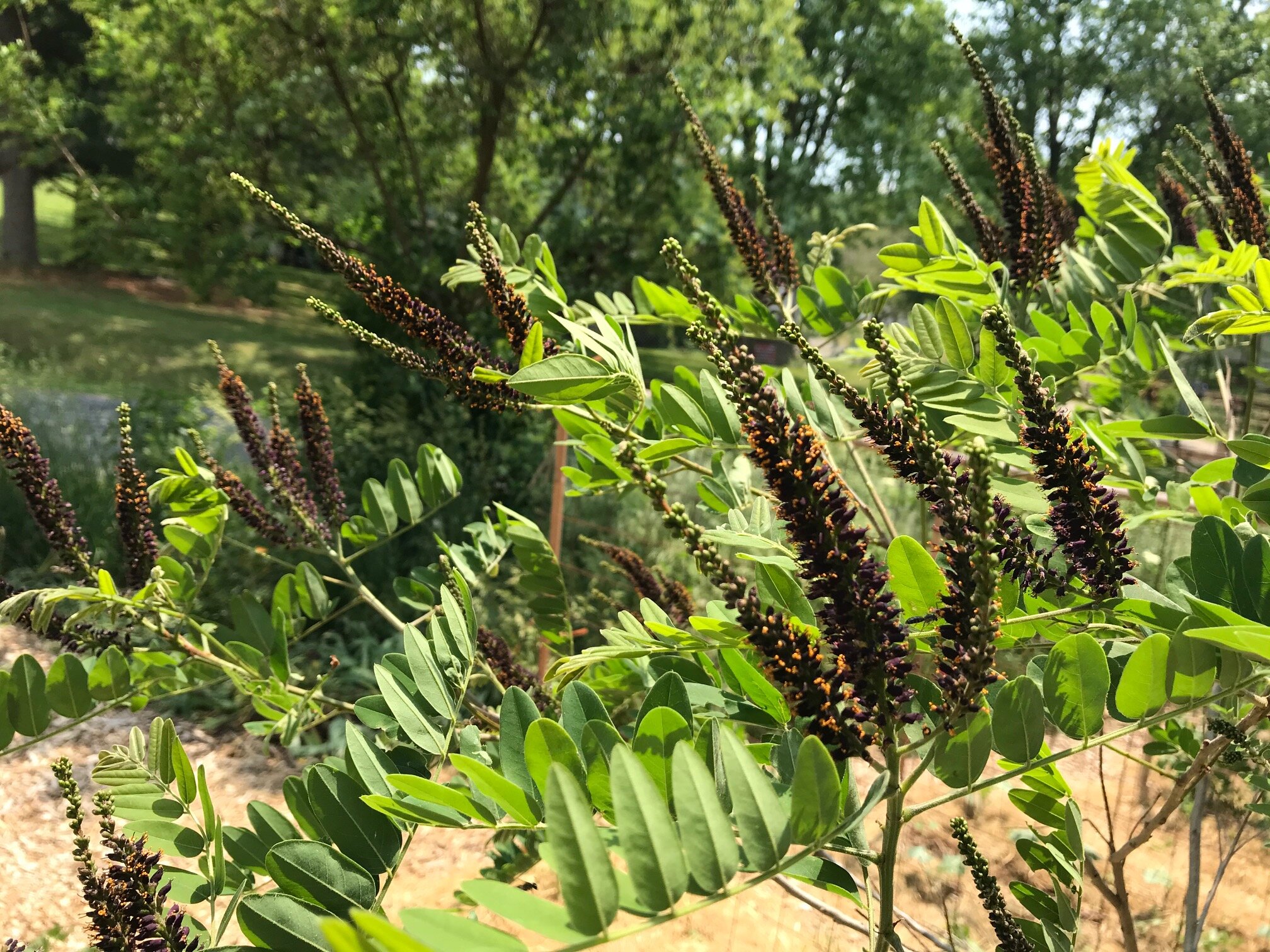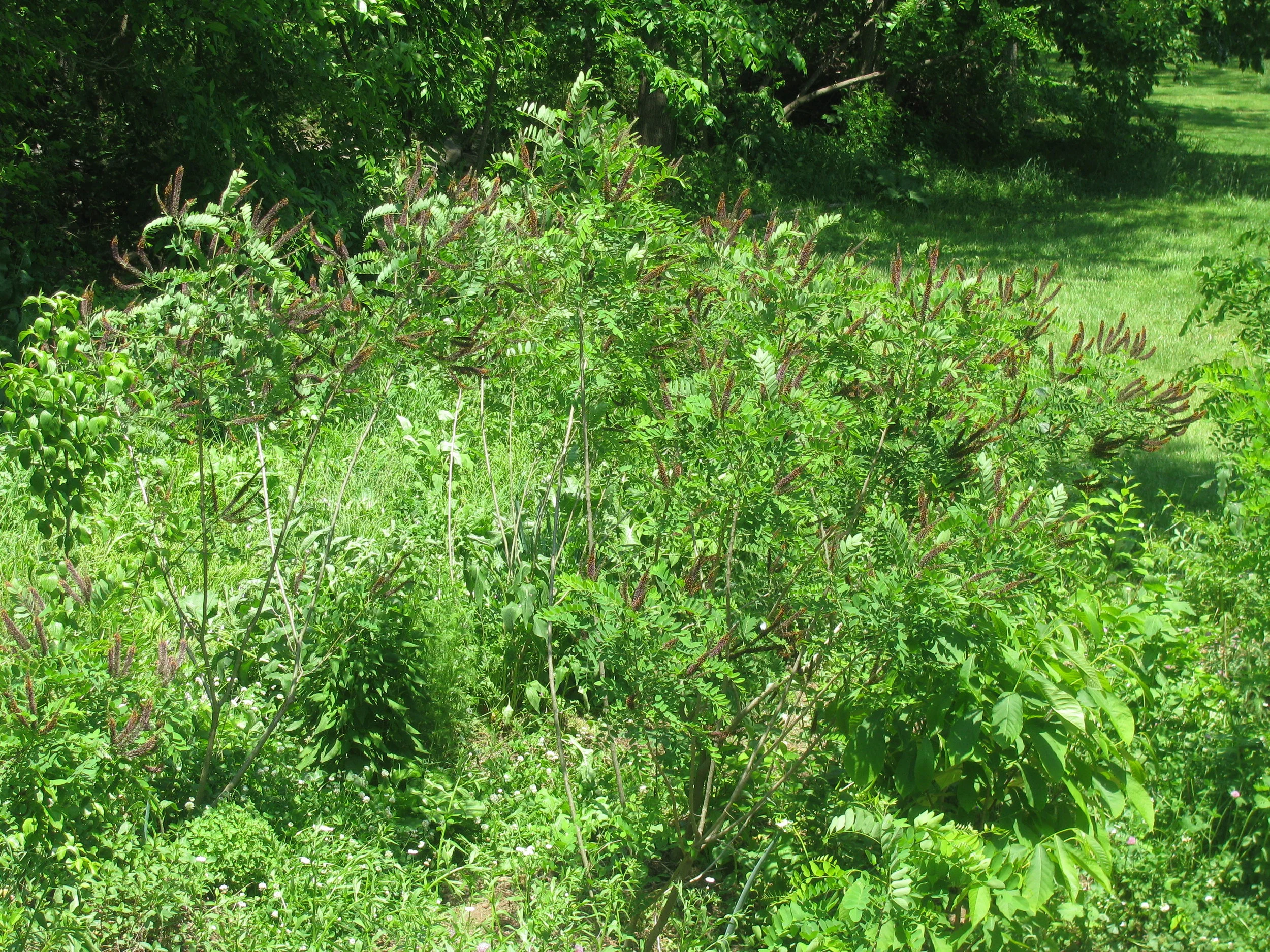False Indigo | River Locust







False Indigo | River Locust
Amorpha fruticosa
Plant for the vanilla cones of purple flowers, for coppiced biomass and free supply of nitrogen, and for potential phytoremediation and metabolic medicine!
Hardy from Zones 4-9. Up to 14 feet tall, 6-15 feet wide unless pruned.
Amorpha has a few common names, such as Blue False Indigo (not to be confused with Baptisia), False Indigobush, Desert False Indigo, and even Bastard Bush (apparently because it’s not the real Indigo). After spending more time with Amorpha, we prefer the name River Locust. This is one of our favorite agroforestry plants!
Our streambanks host lots of River Locust and we’ve interplanted many into insectary beds alongside annual gardens and throughout orchard rows. This shrub, in mutual aid with bacteria, turns atmospheric nitrogen into soil nitrogen, and vigorously bounces back from coppicing for mulch or insect-repelling animal bedding. Deer don’t bother them! River Locust’s bark contains resins that act as a natural insecticide but the tall conical flower spikes, or racemes, attract beneficial insects with blue-purple colors and a scent reminiscent of vanilla. Bees and butterflies relish the nectar from April to June, bobwhite quail and dove enjoy the Autumn seeds, and butterflies and moths cozy up to the larval-hosting leaves.
The many-named shrub grows all over Turtle Island, from the very west to the very east of the U.S. as well as northern Mexico and southeast Canada. River Locust, or Indigobush if you prefer, is exceptionally adaptable: tolerating negative freezing temperatures in the north and hot subtropics in the south, found in wet fertile soils or dry interfile ones, in sunny edges or woodland shade, and along waterways of all sizes. The far-reaching roots hold soil, support a sturdy shelterbelt in strong winds, and remediate toxins. Researchers on Chinese mining sites demonstrated River Locust’s remarkably ability to bioaccumulate numerous heavy metals while also fixing nitrogen.
Great Plains tribes like the Kiowa and Lakota have used False Indigo fiber for weaving rugs and bedding, and straight stems for lightweight arrows and a hygienic place-mat for butchered meat. Seminole medicine-makers used leaf and stem infusions as a general tonic. The seeds can be crushed for oil and the plant can be pressed into small amounts of blue dye, hence the common named False Indigo. Amorpha is often cultivated as an ornamental, but the high germination rate tends to escape decorative confines in Asia and Europe where it’s considered a noxious invasive species. We’ve noticed good groundcovers make good fences in our neck of the woods, but some fascinating European research goes far deeper. According to the report, River Locust contains chemical constituents that can serve as “endless, cheap” medicine for metabolic diseases like diabetes. They suggest the possibility of rural employment to balance ecosystem health and regulate biodiversity by wild harvesting Amorpha for metabolic medicine.
We propagate our River Locust from the seeds of shapely shrubs, and we won’t ship any to Europe or Asia.